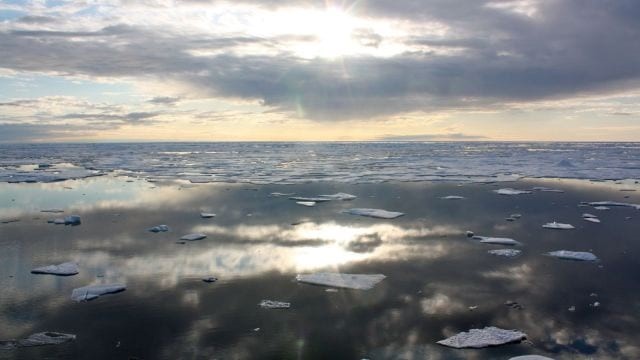Free Courses Sale ends Soon, Get It Now


Free Courses Sale ends Soon, Get It Now



Source: IndianExpress
Disclaimer: Copyright infringement not intended.
Context
Details
Heat Distribution
Objectives
Importance of Polar Regions
|
Category |
Arctic |
Antarctic |
|
Location |
Northern Hemisphere, centered around the Arctic Ocean |
Southern Hemisphere, centered around the continent of Antarctica |
|
Geography |
Ocean surrounded by land (Canada, Russia, Greenland, USA (Alaska), Norway, Sweden, Finland, Iceland) |
Continent surrounded by the Southern Ocean |
|
Ice Coverage |
Sea ice varies seasonally, with significant melting in summer and refreezing in winter |
Permanent ice sheet covering the continent, with ice shelves like Ross and Filchner-Ronne |
|
Temperature Range |
-40°C in winter to 0°C in summer |
-60°C in the interior in winter to around -20°C on the coast in summer |
|
Precipitation |
Low, classified as a polar desert, most falls as snow |
Extremely low, the driest continent, most falls as snow |
|
Flora and Fauna |
Polar bears, Arctic foxes, caribou, seals, migratory birds, tundra vegetation like mosses, lichens, and shrubs |
Penguins, seals, seabirds (albatross), limited vegetation (mosses, lichens, algae) |
|
Marine Life |
Whales, walruses, fish species, rich marine biodiversity |
Krill, whales, seals, penguins, rich marine ecosystem with many endemic species |
|
Presence of Penguins |
Absent |
Native, including species like Emperor and Adélie penguins |
|
Presence of Polar Bears |
Native |
Absent |
|
Terrestrial Mammals |
Present, including species like reindeer (caribou), Arctic foxes, musk oxen, and wolves |
Virtually absent; some seals and penguins are considered semi-terrestrial |
|
Tundra Lines |
Extensive tundra with mosses, lichens, and dwarf shrubs in areas like Alaska, Canada, and Siberia |
No true tundra; limited terrestrial vegetation restricted to mosses, lichens, and algae |
|
Human Presence |
Indigenous communities (Inuit, Saami), multiple research stations |
No indigenous population, temporary research stations under the Antarctic Treaty System |
|
Climate Change Impact |
Rapid warming, twice the global average rate, leading to ice melt and permafrost thawing |
West Antarctica experiencing warming and ice loss, East Antarctica relatively stable or gaining ice |
|
Research Focus |
Climate change, ecology, sustainable development |
Glaciology, meteorology, astronomy, biology |
|
Role in Climate Regulation |
Reflects sunlight (albedo effect), stores freshwater in ice |
Reflects sunlight (albedo effect), stores vast amounts of freshwater in ice |
|
Global Significance |
Influences global weather patterns, sea level rise, and biodiversity |
Affects global sea level rise, climate models, and weather patterns |
|
Primary Research Bodies |
Arctic Council, National Snow and Ice Data Center (NSIDC) |
Scientific Committee on Antarctic Research (SCAR), British Antarctic Survey (BAS) |
Sources:
|
PRACTICE QUESTION Q. By addressing the current gaps in polar energy measurements, PREFIRE is expected to make significant contributions to our understanding of global climate dynamics and the specific challenges posed by rapid changes in the polar regions. Discuss. (250 words) |
© 2024 iasgyan. All right reserved